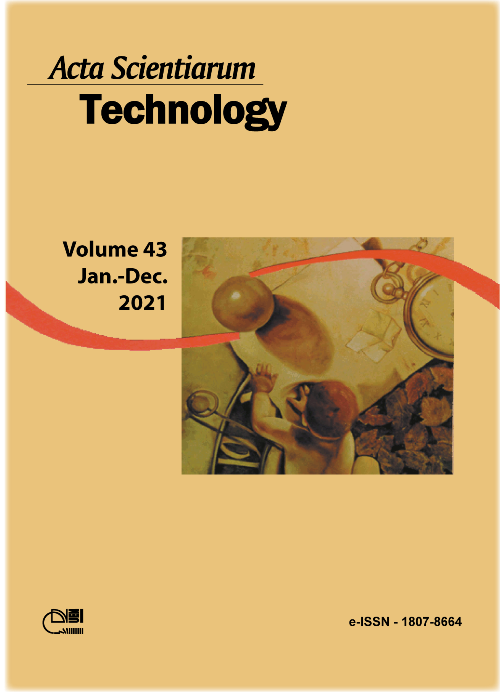Bioactive compounds in the leaves of Baccharis dracunculifolia: extraction process and characterization
DOI:
https://doi.org/10.4025/actascitechnol.v43i1.49826Palavras-chave:
biological activity; experimental design; leaf extracts; natural products.Resumo
Baccharis dracunculifolia has been used in popular medicine because of its bioactive properties, which include anti-inflammatory, antiulcerative and hepatoprotective potentials. A 2³ central composite rotational design was used to define the best conditions for extracting the bioactive compounds from the leaves of Baccharis dracunculifolia. The parameters studied included the solvent concentration, time and temperature of extraction and the influence of these on the total phenolics content and antioxidant activity. The best conditions were 95 % methanol (v/v), 20 min extraction time, and 70 °C temperature. Under the optimized conditions, high contents of total phenolic compounds (72.5 mg GAE g-1) and high DPPH (865.6 µmol TE g-1) and ABTS (331.11 μmol TE g-1) free radical scavenging capacity and a high ferric reducing antioxidant power (1558.00 μmol FeSO4.7H2O g-1), were obtained. The extract also showed promising anti-microbial activity, demonstrating fungistatic action against C. tropicalis and C. albicans (5 mg mL-1 and 7 mg mL-1, respectively) and bacteriostatic effect against Escherichia coli (60 e 70 mg mL-1), Salmonella enterica typhimurium (40; 60 and 70 mg mL-1) and Staphylococcus aureus (4 mg mL-1). HPLC-DAD analysis showed an extract rich in the phenolic compounds catechin (0.659 mg g-1), caffeic acid (1.135 mg g-1), p-coumaric acid (0.772 mg g-1), ferulic acid (6.24 mg g-1), pinocembrina (0.155 mg g-1) and rutin (0.037 mg g-1).
Downloads
Downloads
Publicado
Como Citar
Edição
Seção
Licença
DECLARAÇíO DE ORIGINALIDADE E DIREITOS AUTORAIS
Declaro que o presente artigo é original, não tendo sido submetido í publicação em qualquer outro periódico nacional ou internacional, quer seja em parte ou em sua totalidade.
Os direitos autorais pertencem exclusivamente aos autores. Os direitos de licenciamento utilizados pelo periódico é a licença Creative Commons Attribution 4.0 (CC BY 4.0): são permitidos o compartilhamento (cópia e distribuição do material em qualqer meio ou formato) e adaptação (remix, transformação e criação de material a partir do conteúdo assim licenciado para quaisquer fins, inclusive comerciais.
Recomenda-se a leitura desse link para maiores informações sobre o tema: fornecimento de créditos e referências de forma correta, entre outros detalhes cruciais para uso adequado do material licenciado.















